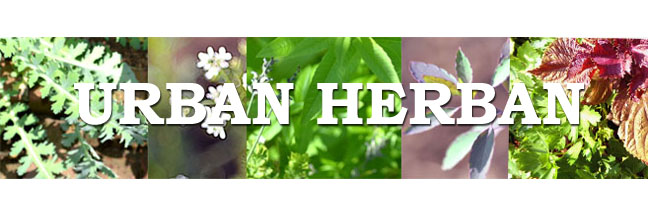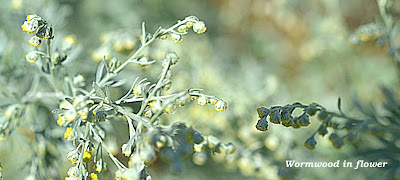 The schematic (below) shows what was in the Grace Kriegel Memorial Herb Garden four years ago, 2008-2009.
The schematic (below) shows what was in the Grace Kriegel Memorial Herb Garden four years ago, 2008-2009.
I was the Herb Garden Keeper for tow summers: 2008, 2009. Time was spent uprooting over 400 large milkweeds with extensive tap roots, cutting down 1,200 garlic chives, in the hope of preventing widespread takeover of the Gardens space, making a blog to capture the beauty of the Garden in pictures, identifying and and mapping the Garden's weeds and plants.(Whew! It was a long and lonely summer. A team was definitely needed.)
The next season, there were helpers from the greenhouse group: Herb Garden Planning started. Over the course of two summers, over 15 wild flower varieties were identified, herbs were specifically grown for the Garden, and herbs that were perennials were identified. The following summer Nancy Cochrane continued the Keeper role.
 It is different today---much has been done to redesign the space. Nancy led winnowing and replanning of crowded areas shown above and areas were bordered.
It is different today---much has been done to redesign the space. Nancy led winnowing and replanning of crowded areas shown above and areas were bordered.
Although the schematic pictured is small, it exists as a PDF file in full 8.5" X 11" and is available for the asking. It remains as one of the few records left of planting design of that garden. It is a valuable record of what was planted in the garden at that time. At the bottom of this listing is the 2008 list of plants by section.
The Original List for the Grace Kriegel Memorial Herb Garden
(Common Name: Use Latin Name Type:
A=Aromatic, M=Medicinal, C=Culinary, Dec.= Decorative, D=Dye, HP= Hardy Perennial, TP= Tender Perennial, A=Annual, HA= Hardy Annual. List by Grace Kriegel)
Sneezewort: M Achillea ptmarmica HP
Bear’s Breeches: Dec Acanthus mollis TP
Anise Hyssop: C Agustache foeniculum HP
Lady’s Mantle: Dec Alchemillea mollis HP
Garlic Chives: C Allium tuberosum HP
Dill: C Anethum graveolens A
Chamomile (Ger): M Matricaria chamomilla HP
Butterfly Weed: M Asclepias tuberose HP
Mullein: Dec Verbascum P
Carolina Allspice: A Calycamthus HP
Feverfew: M Tanacetum parthenium HP
Lemon Grass: C Cymbopogton citratus TP
Scotch Broom: C Cytisus scoparius, HP
Queen Anne’s Lace: M Daucus carota HB
Purple Coneflower: M Echinacea purpurea HP
Globe Thistle: Dec Echinops ritro HP
Our Lady’s Bedstraw: C Galium verum HP
Baby’s Breath: Dec Gypsophila paniculate HP
Indigo : Dye Indigofera HH
Sweet Bay: C Laurus nobilis TP
Lavender: A & M Lavendula HP
Lovage: C Levisticum officinale HP
Lemon Balm M +C Melissa officinalis HP
Bee Balm/Oswego Tea: M Monarda didyma HP
Greek Oregano: C Origanum HP
Russian Sage: Dec Perovskia HP
Italian Parsley: C Petroselinum swativum HP
Curly Leaf Parsley C Petroselinum crispum HP
Salad Burnet: C Sanguisorba minor HP
Lungwort : M Pulmonaria officinalis HP
Rue: C Ruta graveolena HP
Soapwort : Saponaria officinalis HP
Lemon Thyme: C Thymus citriodorus HP
Pot Marigold: D Calendula officinalis HP
originally in: P. Libutti, In the Garden, (blog), http://www.blogger.com/post-edit.g?blogID=4769595601834500422&postID=8006632470792862979 2008
“
We of the Garden Club of Teaneck offer this gift to the Township with the hope that it will serve as a living memorial to all that was fine in our colonial past and to the spirit that is still strong in all of us to make democracy work by exemplifying what people acting together can accomplish.”---Grace Kriegel,
Teaneck News, May 26, 1976.
“ On April first, 1975, then-Mayor Eleanor Kieleszek turned over the first spade full of earth for the Bicentennial Celebration Herb Garden, located on the Municipal Green. But work on the project really began two years prior to that date.A group of Garden Club members, headed by Grace Kriegel, prepared a plan for a permanent garden as a gift to the township. The garden would be composed of an “Inner Knot Garden”based on authentic colonial designs and bordered by a four foot brick walk. Surrounding the walk would be an “Outer Garden” composed of culinary, decorative, medicinal and aromatic herbs.
Plants would be indigenous to to the northeastern area, with minor exceptions for educational purposes. Most of the plants would be propagated at the township greenhouse. There were many hours of painstaking research and trips to sample gardens in NJ, NY, CT, and PA.
A small group of members began to create the inner knot garden in the Spring of 1975. They were joined by several Cub Scout Den members, led by Mrs. Kay Hower, on Saturday mornings, learning how to plant, mulch, weed, rake and water a garden.
In April of 1976, the hopes of having the garden enclosed by a brick path were realized through the helpful efforts of Miss Olive Tamborelle of the Teaneck Public Library. An anonymous contributor donated two thousand used bricks and Mr. Ed Carratura generously contributed the labor. The outer garden was soon completed.Twenty years later, the garden still retains most of the original design.
“...A special thank you to the Monday Herb Group--Angie Torrieri (Group Leader), Ida Caselli, Helen Humphreys, Helen Hurlbut, Paul Hurlbut, John Lewis, Catherine Lloyd, Emma Mutchler, Monica Oscarsson, Lenora Wesl and George Zourdos for their tireless work in maintaining the Garden twelve months of the year and whose efforts, along with those of Rosalie Beffa, Helen Bove (posthumously), Nancy Cochrane and Julia Condit, made today’s dedication a reality.”
From the program for the
Dedication of the Grace Kriegel Memorial Herb Garden, October 5, 1996, 1:00PM, Township of Teaneck, Municipal Green.
Initial Inventory of Plants 2008
West section:Butterfly Bush
Rosemary
Bay Tree
Sage
West SideCoreopsis
Anise Hyssop
Chives
Scented Geranium
Lemon Balm
Spice Bush
Daylilies
Sedum
Multiflora Rose
Pink Hibiscus
South SideHolly
Daylilies
Iris
Yucca
Sedum
Chives
East Side
Iris
Bellflowers
Purple Coneflowers
Solomon's Seal
Lilies-of-the-Valley
Junipers
North Side
JunipersWitch Hazel
Spiderwort
Daylilies
Mahonia
White Hibiscus
Center (Knot)Aloe
English Ivy
Periwinkle
Chamomile
Greek Oregano
Italian Oregano
Lemon Balm
Scented Geranium
Spiderwort
Lady's Mantle
Queen Anne's Lace



































